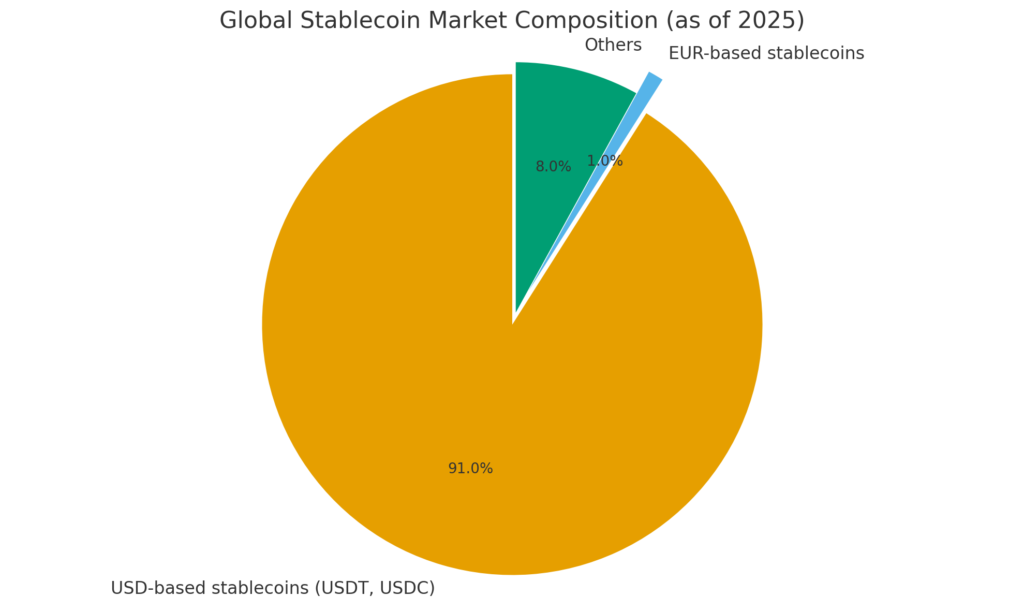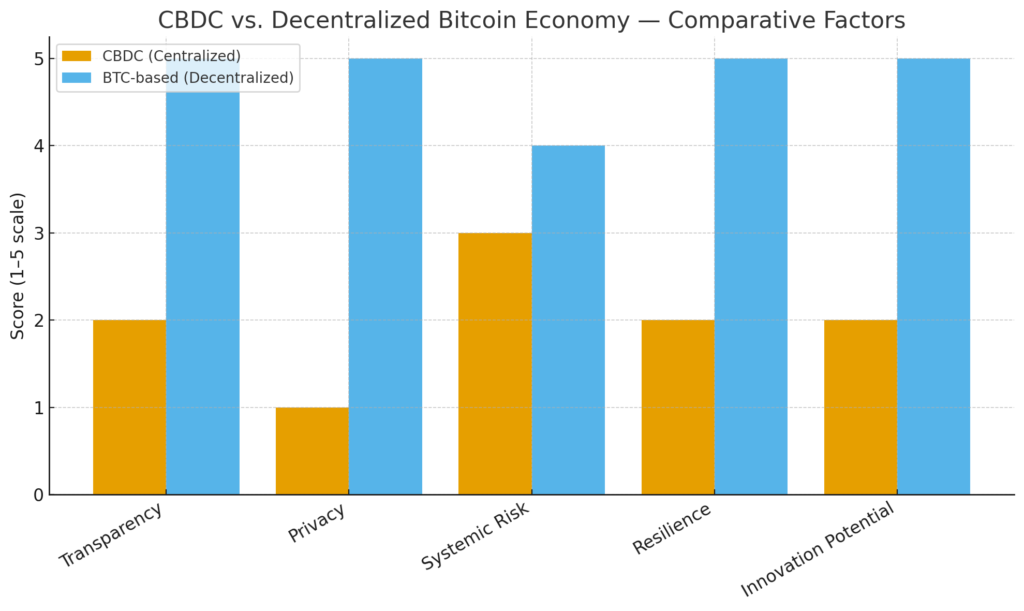
Main Points :
- A group of French lawmakers proposes establishing a national Bitcoin strategic reserve to promote a decentralised economy.
- The resolution calls for rejecting the proposed Digital Euro (a central-bank digital currency) and favouring euro-denominated stablecoins plus crypto collateral use.
- The plan envisions acquiring up to roughly 2 % of the total Bitcoin supply (≈ 420,000 BTC) over 7–8 years, funded via mining, seized crypto, and savings schemes.
- The authors highlight concerns over bank-run risks and centralised control inherent in CBDCs.
- The move comes amid broader global trends of treating Bitcoin as a strategic asset and reshaping national monetary frameworks.
1. A New French Financial Strategy Anchored in Bitcoin
In late October 2025, members of the French National Assembly led by Éric Ciotti of the UDR party submitted a legislative proposal (European Resolution No. 1984) intended to transform France’s monetary strategy. Under this resolution, the government is urged to create a “national Bitcoin strategic reserve”, effectively treating Bitcoin (BTC) as a form of “digital gold”.
The proposal signals a pivot away from purely traditional fiat-based reserve assets toward an explicit posture placing decentralised crypto-assets at the heart of monetary sovereignty. One key ambition is that this reserve would accumulate up to approximately 420,000 BTC (around 2 % of the total Bitcoin supply) over a 7–8 year period.
The rationale is multi-fold: strengthening France’s financial independence, reducing reliance on the US-dollar-centric stablecoin ecosystem, leveraging domestic surplus energy (nuclear/hydro) for mining, and utilising seized crypto assets.
For investors and practitioners in blockchain, this proposal is a strong signal that Bitcoin’s status as a strategic reserve asset is migrating from fringe to mainstream national policy — which may trigger downstream effects on regulatory frameworks, institutional allocations, and on-chain infrastructure for sovereign actors.
2. Opposing the Digital Euro and Promoting Stablecoins & Crypto Collateral
A central pillar of the resolution is opposition to the forthcoming Digital Euro — a central-bank digital currency (CBDC) being pursued by the European Central Bank (ECB). The lawmakers argue that a CBDC designed and issued by a centralised authority poses threats to individual financial freedom, privacy and the stability of the banking system by enabling large-scale deposit migration to the central bank.
Instead, the resolution calls for:
- Supporting euro-denominated stablecoins as an alternative to dollar-backed ones. According to recent IMF data cited in the motion, some 91 % of global stablecoin circulation (~$230 billion) is denominated in US dollars (e.g., Tether (USDT), USD Coin (USDC)) while euro-stablecoins remain minuscule (~$259 million).

- Relaxing Basel Committee rules on crypto-collateralised lending (noting that current risk-weighting for crypto exposures can reach up to 1,250%) to enable banks to lend against crypto collateral more freely.
- Encouraging domestic crypto-industry expansion (including mining tax incentives, easier institutional entry into crypto) and treating crypto assets as part of France’s strategic financial architecture.
For a reader searching for new crypto-asset opportunities and blockchain applications, these policy signals suggest: greater regulatory comfort moving forward, potential growth in euro-stablecoin issuance, and institutional demand for Bitcoin or Bitcoin-backed structures.
3. Funding, Mining and Reserve Accumulation Strategy
The proposal doesn’t just flirt with rhetoric — it outlines mechanisms for implementing the reserve:
- Using France’s surplus nuclear and hydroelectric energy to mine Bitcoin domestically, thereby converting otherwise under-utilised energy into financial reserve assets.
- Absorbing Bitcoin seized in judicial or regulatory actions (which would otherwise be sold or returned) into the strategic reserve.
- Allocating a portion of popular savings programmes (e.g., “Livret A”, LDDS) to daily Bitcoin purchases on the open market — for instance, targeting the acquisition of approximately 55,000 BTC per year from savings contributions.

- Potentially allowing tax payments in Bitcoin (subject to constitutional approval), further embedding Bitcoin in the financial economy.
From a practitioner viewpoint: this represents an interesting cross-over of energy infrastructure, monetary policy and blockchain economics. It also suggests potential growth in Bitcoin-mining activity in France, increased energy-asset financialisation, and sovereignty-driven demand for Bitcoin holdings.
4. Banking Instability, CBDC Risks and Decentralised Economy Rationale
The motion articulates a critique of CBDCs: namely, that they could centralise control of money, erode individual financial autonomy and catalyse bank-run scenarios. For example, if depositors can move funds directly from commercial banks to the central bank’s digital wallet, the risk of disintermediation increases.

Furthermore, the policymakers draw a parallel with China’s Digital Yuan and social-credit system, warning that centralised digital money could morph into a tool of surveillance or control.
In contrast, adopting Bitcoin and other decentralised crypto assets becomes a vehicle for a decentralised economy — one that resists centralised oversight and ensures sovereign monetary autonomy. For the blockchain-interested reader, this reinforces the narrative of crypto as not just speculative asset but as a foundational component of a new monetary order.
5. Implications for Investors, New Crypto Assets and Blockchain Use-Cases
With France signalling this strategic shift, several implications arise for those looking for new asset opportunities or practical blockchain applications:
- Bitcoin as strategic reserve demand: If major nations begin treating Bitcoin as a reserve asset, institutional and sovereign accumulation may tighten supply and underpin long-term value.
- Euro-denominated stablecoin issuance: France’s push for euro-stablecoins could foster new token-issuance opportunities, regional stablecoin ecosystems and payment rails utilising blockchain infrastructure.
- Crypto-collateral lending and banking integration: Calling for relaxing bank rules around crypto collateral may lead to growth in DeFi/TradFi hybrid products, tokenised debt and lending platforms anchored in regulated banks.
- Energy-backed mining infrastructure: The proposal to link French surplus clean energy to Bitcoin mining suggests emerging business models where energy producers become financial asset holders via blockchain.
- Regulatory signalling: The fact that a major European economy is moving from caution to embracement of crypto may reduce regulatory risk premium for next-gen tokens, protocols and blockchain infrastructure projects.
For developers (including you, the JavaScript/web3 developer), this suggests a growing ecosystem for building wallet integrations, chain swaps (e.g., BTC↔ETH), stablecoin rails in euros, tokenised bank products and sovereign/enterprise-grade wallet infrastructure.
6. Political & Practical Hurdles Ahead
While the proposal is bold, the path to law is uncertain. The UDR party holds only 16 seats out of 577 in the National Assembly, making passage of the bill challenging.
Moreover, converting a resolution into concrete policy will require coordination with French regulators (e.g., the Autorité des Marchés Financiers (AMF)), energy-policy changes, constitutional amendments (if tax payments in Bitcoin are enabled), and potentially European-Union level-coordination given the Digital Euro is an EU project.
From a timeline perspective, even if passed, the accumulation of 420,000 BTC over 7 to 8 years is an ambitious program. Market-impact, Bitcoin volatility, mining economics, energy policy and public acceptance are all variables.
For crypto project planners or token issuers, this means that while signals are strong, one should remain aware of execution risk, regulatory delay risk and market reaction risk.
7. Contextualising in Global Crypto & Sovereign Reserve Trends
This French initiative aligns with a broader trend: nation-states and large institutions increasingly treating Bitcoin and other crypto assets as parts of their reserve or balance-sheet strategies. For example, Germany’s Aifinyo AG converted its balance sheet to Bitcoin, and South Korea’s Bitplanet allocated ~$40 million to Bitcoin purchases.
From a macro view, Bitcoin is evolving from an investable asset class for retail/institutional investors into a sovereign asset class — akin to gold or foreign-exchange reserves. For blockchain technology developers and token promoters, this underlines a potential regime shift: blockchain is no longer just a niche innovation but a component of state-level strategy.
In the stablecoin context, the dominance of US-dollar-denominated stablecoins (accounting for ~91 % of global market) can be interpreted as a leverage point for Europe to develop its own ecosystem. The French resolution explicitly makes this point.
For token projects and blockchain protocols, these trends point to growth opportunities in: sovereign and central-bank digital-asset infrastructures, national energy-/mining-backed token models, euro-stablecoin rails, and regulated institutional wallet/treasury services.
Conclusion
The French legislative proposal marks a watershed moment in cryptocurrency’s integration into national monetary policy. By advocating for a national Bitcoin reserve, rejecting a centralised Digital Euro, and promoting euro-stablecoins and crypto collateral banking, France is signalling a future in which decentralised digital assets play a strategic role.
For developers, investors and blockchain practitioners seeking new crypto assets, income streams and practical applications, this is more than ideological noise — it is a strategic signal that may reshape supply-demand, regulation, infrastructure and national policy.
While execution is uncertain and political hurdles remain, the message is clear: cryptocurrency is evolving from speculative asset to geopolitical tool. Keeping this in mind, exploring protocols, stablecoins, wallet infrastructure and mining-/energy-linked token models may position you ahead in the next wave of blockchain adoption.

